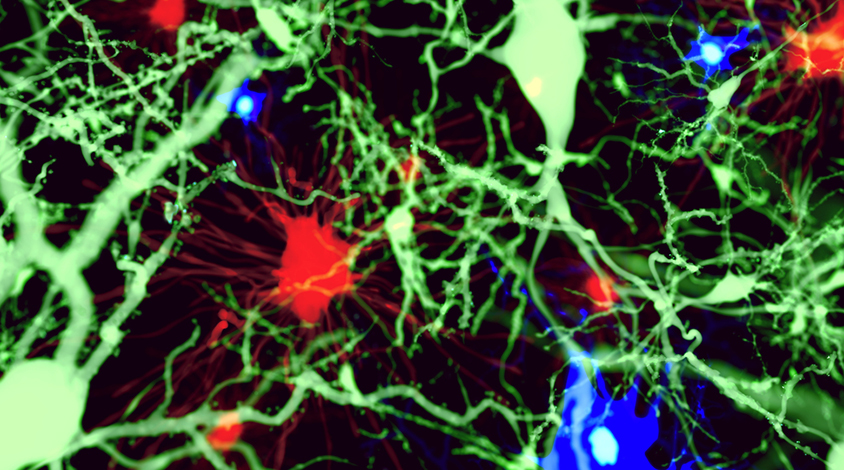
THIS ARTICLE IS MORE THAN FIVE YEARS OLD
This article is more than five years old. Autism research — and science in general — is constantly evolving, so older articles may contain information or theories that have been reevaluated since their original publication date.
Microglia, the brain’s immune cells, may join forces with neurons to battle infections — and they do so in a sex-specific manner. Three independent research groups presented the preliminary results yesterday at the 2016 Society for Neuroscience annual meeting in San Diego.
Maternal infections raise the risk of autism in a child by 12 percent. The new findings suggest this increased risk stems from altered communication between microglia and neurons in the developing brain.
Microglia from male mice mount a stronger response to infection than those in female mice, one team found. The male immune response is accompanied by sex-specific changes in gene expression and in the activity of surrounding neurons. The findings may help explain why autism is more common in boys than in girls.
“Neurons need to be there in order for the microglia to respond to [infection] properly. Microglia are getting signals from neurons that influence how they respond to an immune challenge,” says Jaclyn Schwarz, assistant professor of psychological and brain sciences at the University of Delaware in Newark, Delaware. Schwarz presented one of the studies.
Sexual chemistry:
Microglia in male mice respond to infection by boosting the expression of genes involved in the immune response. As the microglia become equipped to battle an infection, the activity of surrounding neurons declines, according to findings presented by Richa Hanamsagar, a postdoctoral researcher in Staci Bilbo’s lab at Duke University in Durham, North Carolina.
By contrast, activated microglia from female mice amp up the expression of genes involved in other functions, such as cell movement. The findings are consistent with the weaker immune response in females, but Hanamsagar says it is unclear why females activate the particular genes they do.
“It seems that the priorities of female microglia are different from those of males,” Hanamsagar says. “Females do not see an immune challenge the same way that males see an immune challenge.”
Schwarz’s group arrived at a similar conclusion after infecting 4-day-old mouse pups with the bacterium Escherichia coli and comparing the immune responses of male and females.
Within a few hours of infection, male mice had more than twice as many microglia in their brains as female mice had. The microglia from male mice also expressed higher levels of immune proteins, such as interleukin-6 and interleukin-1 beta, than female mice did.
The researchers could not reproduce these effects when they cultured microglia from the pups’ brains and exposed them to part of a bacterium to induce an immune response. Adding sex hormones to the dish did not help, either.
“We were really surprised that the microglia themselves couldn’t respond to the steroid hormones,” Schwarz says.
Close encounters:
They soon discovered why this was: Microglia do not express genes for the estrogen or androgen sex hormone receptors. But neurons isolated from the pups’ brains do.
The findings suggest that microglia rely on signals from nearby neurons to mount sex-specific responses to infection. But how this communication works is unclear, Schwarz says. “One of the things that drives me nuts and keeps me awake at night is that we don’t know how these cells talk to each other.”
In a separate study presented at the meeting and published in June in the European Journal of Neuroscience, researchers reported that microglia show spontaneous electrical activity in the presence of neurons, even inactive ones1. Cultured alone, that activity disappears.
“There has to be something coming from these neurons, talking to the microglia and making them respond in some way. Somehow [microglia and neurons] just need to be next to each other,” Schwarz says.
Her team is looking more closely at sex differences in microglia activation during various stages of development.
For more reports from the 2016 Society for Neuroscience annual meeting, please click here.
By joining the discussion, you agree to our privacy policy.